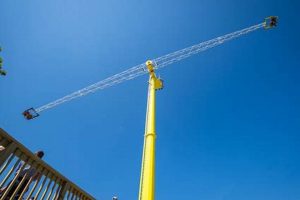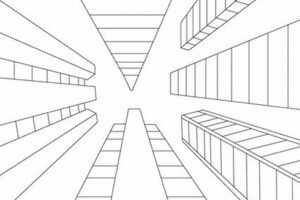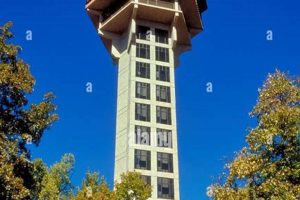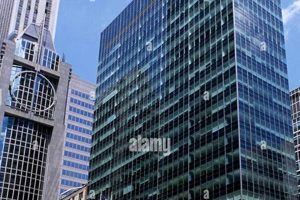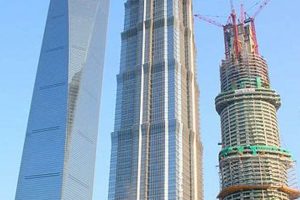Modern skyscrapers are tall, multi-story buildings that are constructed using advanced technologies and materials. They are designed to be both functional and aesthetically pleasing, and they often serve as landmarks in major cities around the world.
Skyscrapers offer a number of advantages over traditional low-rise buildings. They can accommodate more people and businesses in a smaller area, which can help to reduce urban sprawl. They can also be more energy-efficient, as they can take advantage of natural light and ventilation. Additionally, skyscrapers can be designed to withstand earthquakes and other natural disasters.
The history of skyscrapers can be traced back to the late 19th century, when the invention of the elevator made it possible to construct buildings that were more than a few stories tall. The first skyscraper was the Home Insurance Building in Chicago, which was completed in 1885. Since then, skyscrapers have become increasingly common in cities around the world, and they have come to symbolize economic prosperity and technological advancement.
1. Height
Height is one of the most defining characteristics of modern skyscrapers. The world’s tallest skyscrapers are iconic landmarks that symbolize economic prosperity and technological advancement. But height is not just about aesthetics. It also has a number of functional advantages.
- Increased floor space: Taller buildings can accommodate more people and businesses in a smaller area. This can help to reduce urban sprawl and make cities more compact and livable.
- Improved views: Upper floors of skyscrapers offer stunning views of the surrounding city. This can be a major selling point for residential and commercial tenants.
- Reduced energy consumption: Taller buildings can be more energy-efficient than shorter buildings. This is because they can take advantage of natural light and ventilation, and they can be designed to minimize heat loss.
- Increased safety: Taller buildings are less likely to be damaged by earthquakes and other natural disasters. This is because they are built with stronger materials and they have deeper foundations.
Of course, there are also some challenges associated with building tall skyscrapers. These challenges include:
- Wind resistance: Taller buildings are more susceptible to wind damage. This is why they must be designed with strong wind-resistant features, such as reinforced concrete cores and exterior bracing.
- Fire safety: Taller buildings are more difficult to evacuate in the event of a fire. This is why they must be equipped with advanced fire safety systems, such as sprinklers, smoke detectors, and fire escapes.
- Structural integrity: Taller buildings must be able to withstand the weight of their own materials, as well as the weight of the people and businesses that occupy them. This is why they must be built with strong and durable materials.
Despite these challenges, the benefits of building tall skyscrapers often outweigh the risks. Taller buildings can help to create more compact and livable cities, they can offer stunning views, they can be more energy-efficient, and they can be safer in the event of a natural disaster.
2. Design
Design is one of the most important aspects of modern skyscrapers. It is what sets them apart from other types of buildings and makes them iconic landmarks. The design of a skyscraper must take into account a number of factors, including function, safety, and aesthetics.
- Function: The design of a skyscraper must be functional first and foremost. It must be able to accommodate the needs of its occupants, whether they are residential, commercial, or industrial. The design must also take into account the building’s location and climate.
- Safety: The design of a skyscraper must also take into account safety. The building must be able to withstand earthquakes, hurricanes, and other natural disasters. It must also be designed to prevent fires and other accidents.
- Aesthetics: The design of a skyscraper must also be aesthetically pleasing. It should be a landmark that people can be proud of. The design should also reflect the culture and history of the city in which it is located.
The design of modern skyscrapers is constantly evolving. New technologies and materials are making it possible to build taller and more complex buildings. As a result, skyscrapers are becoming increasingly iconic landmarks and symbols of economic prosperity.
3. Materials
The materials used in the construction of modern skyscrapers play a vital role in determining their height, strength, and safety. Over the years, there have been significant advancements in the development of new materials that have made it possible to build taller and more complex skyscrapers.
- Steel: Steel is one of the most important materials used in the construction of modern skyscrapers. It is strong, durable, and relatively lightweight. Steel frames are used to support the weight of the building and to resist wind forces.
- Concrete: Concrete is another important material used in the construction of modern skyscrapers. It is a mixture of cement, sand, gravel, and water. Concrete is strong, fire-resistant, and can be molded into any shape. It is used to create the floors, walls, and other structural elements of skyscrapers.
- Glass: Glass is used extensively in the construction of modern skyscrapers. It is used to create windows, curtain walls, and other exterior elements. Glass is transparent, allowing natural light to enter the building. It is also strong and durable, and can withstand high winds and other weather conditions.
- Composite materials: Composite materials are made from a combination of two or more different materials. They are often used in the construction of skyscrapers because they are strong, lightweight, and durable. Composite materials can be used to create a variety of structural elements, including beams, columns, and panels.
The use of these advanced materials has made it possible to build taller, stronger, and more sustainable skyscrapers. As a result, skyscrapers are becoming increasingly iconic landmarks and symbols of economic prosperity.
4. Construction
The construction of modern skyscrapers is a complex and challenging process that requires careful planning and execution. It involves a wide range of disciplines, including architecture, engineering, and construction management.
- Planning: The first step in the construction of a modern skyscraper is planning. This includes developing the design of the building, obtaining the necessary permits, and securing financing.
- Foundation: Once the planning is complete, the construction of the foundation can begin. The foundation is the base of the building and it must be strong enough to support the weight of the entire structure.
- Structure: The next step is to construct the structure of the building. This includes the frame, the floors, and the walls. The structure must be strong enough to resist wind, earthquakes, and other natural disasters.
- Exterior: Once the structure is complete, the exterior of the building can be finished. This includes the windows, the curtain walls, and the roof.
- Interior: The final step is to finish the interior of the building. This includes the installation of the mechanical, electrical, and plumbing systems, as well as the finishes, such as the flooring, the walls, and the ceilings.
The construction of a modern skyscraper is a major undertaking that can take several years to complete. However, the end result is a building that is both beautiful and functional, and that can stand for centuries.
5. Function
Function is one of the most important aspects of modern skyscrapers. It determines the purpose of the building and the way it is used. Modern skyscrapers can serve a variety of functions, including:
- Residential: Residential skyscrapers are designed for people to live in. They typically have apartments or condos on multiple floors. Residential skyscrapers are often located in urban areas, where land is scarce and housing is in high demand.
- Commercial: Commercial skyscrapers are designed for businesses to operate in. They typically have offices on multiple floors. Commercial skyscrapers are often located in central business districts, where businesses can be close to their customers and other businesses.
- Mixed-use: Mixed-use skyscrapers combine residential and commercial functions. They typically have apartments or condos on the lower floors and offices on the upper floors. Mixed-use skyscrapers are becoming increasingly popular, as they offer a convenient and efficient way to live and work in the same building.
- Special purpose: Special purpose skyscrapers are designed for a specific purpose, such as a hotel, a hospital, or a university. Special purpose skyscrapers are often designed with unique features that are tailored to their specific function.
The function of a modern skyscraper has a significant impact on its design. For example, residential skyscrapers typically have smaller floor plates than commercial skyscrapers, as they need to accommodate more units. Mixed-use skyscrapers often have a variety of amenities, such as retail stores and restaurants, to serve the needs of both residents and workers. Special purpose skyscrapers are often designed with unique features that are tailored to their specific function, such as a hospital with a helipad or a university with a research laboratory.
6. Sustainability
Sustainability is a major consideration in the design and construction of modern skyscrapers. This is because skyscrapers are large, complex buildings that can have a significant impact on the environment. Sustainable skyscrapers are designed to minimize their environmental impact, while also providing a healthy and comfortable indoor environment for occupants.
There are a number of ways to make skyscrapers more sustainable. One important strategy is to use energy-efficient materials and systems. For example, skyscrapers can be designed with high-performance windows that let in natural light while reducing heat loss. They can also be equipped with energy-efficient lighting systems and appliances. Another important strategy is to reduce water consumption. Skyscrapers can be fitted with low-flow fixtures and rainwater harvesting systems. They can also be designed to capture and reuse stormwater.
In addition to reducing their environmental impact, sustainable skyscrapers can also provide a number of benefits for occupants. For example, they can improve indoor air quality by using low-VOC materials and providing natural ventilation. They can also create a more comfortable indoor environment by providing access to natural light and views. As a result, sustainable skyscrapers can help to improve the health and well-being of occupants.
Here are some examples of sustainable skyscrapers:
- The Burj Khalifa in Dubai is the tallest building in the world. It is also one of the most sustainable skyscrapers. The Burj Khalifa uses a number of energy-efficient features, such as high-performance windows, energy-efficient lighting systems, and a rainwater harvesting system.
- The One World Trade Center in New York City is another example of a sustainable skyscraper. The One World Trade Center uses a number of sustainable features, such as a double-skin facade that reduces heat loss, a rainwater harvesting system, and a green roof.
- The Bank of America Tower in New York City is a LEED Platinum-certified skyscraper. The Bank of America Tower uses a number of sustainable features, such as a high-performance curtain wall, a rainwater harvesting system, and a green roof.
Sustainable skyscrapers are becoming increasingly common as more and more people recognize the importance of sustainability. Sustainable skyscrapers can help to reduce our environmental impact, while also providing a healthy and comfortable indoor environment for occupants.
7. Safety
Safety is a paramount concern in the design and construction of modern skyscrapers. These towering structures, often reaching hundreds of stories high, present unique challenges in ensuring the safety of occupants and the general public. However, modern skyscrapers are equipped with a range of advanced safety features and systems that make them remarkably resilient and secure.
One of the most important safety features in modern skyscrapers is their structural integrity. These buildings are designed to withstand extreme forces, including earthquakes, hurricanes, and even terrorist attacks. They are typically constructed with reinforced concrete cores and steel frames that provide exceptional strength and stability. Additionally, skyscrapers are equipped with advanced fire safety systems, such as sprinklers, smoke detectors, and fire escapes, to minimize the risk of fire-related accidents.
Another important safety consideration in modern skyscrapers is occupant evacuation. In the event of an emergency, occupants must be able to evacuate the building quickly and safely. Skyscrapers are designed with multiple stairwells and elevators to provide multiple escape routes. These escape routes are clearly marked and illuminated, and they are regularly inspected and maintained to
ensure their functionality.
The safety of modern skyscrapers is not limited to structural integrity and occupant evacuation. These buildings are also equipped with advanced security systems to deter and respond to potential threats. These systems may include surveillance cameras, access control systems, and intrusion detection systems. Additionally, many skyscrapers have dedicated security personnel who patrol the building and respond to emergencies.
The safety of modern skyscrapers is a complex issue that involves a wide range of factors. However, by incorporating advanced safety features and systems into their design and construction, architects and engineers have created buildings that are remarkably resilient and secure. These safety features help to protect occupants and the general public from a variety of threats, and they play a vital role in making modern skyscrapers safe places to live, work, and visit.
8. Innovation
Innovation is inextricably linked to the evolution of modern skyscrapers. The relentless pursuit of new technologies, materials, and design concepts has been a driving force behind the creation of ever-taller, more sustainable, and more awe-inspiring structures that redefine our skylines and reshape our cities.
- Structural Engineering: Modern skyscrapers push the boundaries of structural engineering, employing innovative techniques and materials to achieve unprecedented heights and withstand extreme forces. The use of high-strength steel, reinforced concrete, and composite materials enables the construction of supertall structures that can soar hundreds of stories into the sky.
- Faade Design: The facades of modern skyscrapers are not merely aesthetic elements but also play a crucial role in energy efficiency and occupant comfort. Advanced glazing technologies, such as double-skin facades and low-emissivity glass, help regulate temperature, reduce glare, and enhance natural light penetration.
- Sustainable Technologies: Sustainability is a major focus of innovation in modern skyscraper design. Green roofs, rainwater harvesting systems, and energy-efficient lighting and HVAC systems minimize environmental impact and create healthier indoor environments for occupants.
- Vertical Transportation: Elevators and other vertical transportation systems are essential to the functionality of modern skyscrapers. Continuous advancements in elevator technology, such as high-speed double-deck elevators and destination dispatch systems, ensure efficient and reliable movement of people throughout these towering structures.
These facets of innovation, combined with the creativity and vision of architects and engineers, have transformed modern skyscrapers into symbols of human ingenuity and architectural prowess. They stand as testaments to our ability to push the limits of design and construction, creating structures that not only meet the demands of contemporary urban living but also inspire and captivate generations to come.
9. Urban Impact
Modern skyscrapers have a profound impact on the urban environment, shaping skylines, transforming neighborhoods, and influencing the way people live, work, and interact. Here are several key facets of the urban impact of modern skyscrapers:
- Increased Density: Skyscrapers allow for a higher concentration of people and businesses in a smaller geographic area, promoting urban density. This can reduce urban sprawl, preserve green spaces, and create a more vibrant and lively city center.
- Economic Development: The construction and presence of modern skyscrapers often stimulate economic growth and revitalization in surrounding areas. They attract businesses, create jobs, and increase property values, contributing to the overall economic prosperity of the city.
- Improved Infrastructure: The development of skyscrapers often necessitates upgrades to transportation infrastructure, such as public transit systems and road networks. This improved infrastructure benefits not only skyscraper occupants but also the wider urban population.
- Social and Cultural Impact: Skyscrapers can become iconic landmarks and symbols of a city’s identity and aspirations. They can serve as venues for cultural events, observation decks, and public spaces, fostering a sense of community and civic pride.
The urban impact of modern skyscrapers is complex and multifaceted, with both positive and potential negative consequences. However, when carefully planned and integrated into the urban fabric, skyscrapers can contribute to the creation of sustainable, vibrant, and prosperous cities.
FAQs
This section addresses frequently asked questions about modern skyscrapers, providing informative answers to common concerns or misconceptions.
Question 1: How do modern skyscrapers withstand strong winds?
Modern skyscrapers are equipped with structural systems that resist wind forces. These systems typically include a strong central core, reinforced concrete walls, and exterior steel bracing. The shape of the building can also play a role in reducing wind resistance.
Question 2: Are modern skyscrapers safe during earthquakes?
Skyscrapers are designed to withstand earthquakes by incorporating various seismic engineering techniques. These techniques include using earthquake-resistant materials, such as reinforced concrete and steel, and incorporating base isolation systems that absorb and dissipate seismic energy.
Question 3: How do modern skyscrapers prevent fires?
Modern skyscrapers have comprehensive fire safety systems that include fire sprinklers, smoke detectors, fire alarms, and fire-resistant materials. Compartmentalization, the division of the building into smaller sections, helps contain fires and prevent their spread.
Question 4: Are modern skyscrapers energy-efficient?
Many modern skyscrapers are designed with energy efficiency in mind. They may incorporate features such as double-glazed windows, energy-efficient lighting systems, and motion-activated sensors to reduce energy consumption.
Question 5: How do modern skyscrapers accommodate large numbers of occupants?
Modern skyscrapers often have multiple elevators and escalators to transport occupants quickly and efficiently. They may also have sky lobbies, which are intermediate floors that connect different sections of the building and reduce elevator traffic.
Question 6: What are the environmental impacts of modern skyscrapers?
The environmental impact of modern skyscrapers varies depending on factors such as their size, design, and construction materials. However, sustainable skyscrapers can minimize their environmental impact through features such as energy-efficient systems, rainwater harvesting, and green roofs.
Summary: Modern skyscrapers are marvels of engineering and design that offer numerous benefits, including increased density, economic development, and improved infrastructure. They are designed to be safe, sustainable, and efficient, incorporating advanced technologies and materials to meet the challenges of urban living in the 21st century.
Transition: To further explore the fascinating world of modern skyscrapers, delve into the following section…
Tips for Modern Skyscraper Design and Construction
Modern skyscrapers are marvels of engineering and architectural ingenuity, but their design and construction involve unique challenges. Here are eight crucial tips to ensure the success of modern skyscraper projects:
Tip 1: Prioritize Structural Integrity
Skyscrapers must withstand extreme forces such as wind and earthquakes. Engineers employ robust structural systems, including reinforced concrete cores and steel frames, to ensure stability and safety.
Tip 2: Optimize Wind Resistance
Skyscrapers are susceptible to wind forces. Aerodynamic shapes, setbacks, and exterior bracing help reduce wind resistance and enhance structural stability.
Tip 3: Ensure Fire Safety
Fire safety is paramount in skyscrapers. Fire-resistant materials, compartmentalization, advanced sprinkler systems, and smoke detectors are essential for preventing and mitigating fire risks.
Tip 4: Focus on Energy Efficiency
Skyscrapers consume significant energy. Employing energy-efficient lighting, HVAC systems, and building materials can reduce energy consumption and promote sustainability.
Tip 5: Enhance Occupant Comfort
Skyscrapers should provide a comfortable and healthy environment for occupants. Natural light, good ventilation, and ergonomic design contribute to occupant well-being and productivity.
Tip 6: Integrate Advanced Technologies
Modern skyscrapers leverage advanced technologies to improve safety, efficiency, and convenience. Smart building systems, automated elevators, and AI-powered maintenance enhance building performance.
Tip 7: Consider Environmental Impact
Sustainable design principles should guide skyscraper construction. Rainwater harvesting, green roofs, and low-VOC materials reduce the building’s environmental footprint.
Tip 8: Collaborate with Experts
Successful skyscraper projects require collaboration among architects, engineers, contractors, and other specialists. Effective teamwork ensures optimal design, construction, and management.
These tips provide valuable guidance for architects, engineers, and developers involved in modern skyscraper projects. By adhering to these principles, they can create safe, sustainable, and iconic structures that redefine urban skylines and enhance the quality of life in cities.
Conclusion: Modern skyscrapers are a testament to human ingenuity and engineering prowess. By incorporating these tips into their design and construction, we can push the boundaries of architecture and create structures that meet the demands of modern urban living while ensuring safety, sustainability, and occupant well-being.
Conclusion
Modern skyscrapers have transformed cities worldwide, becoming symbols of architectural prowess and technological advancement. Through innovative design, advanced engineering, and a focus on sustainability, these towering structures have redefined our skylines and reshaped urban living.
The exploration of modern skyscrapers in this article has highlighted their structural marvels, including earthquake-resistant designs and wind-resistant facades. We have examined their impact on urban environments, from increased density to economic revitalization. Additionally, we have discussed the importance of occupant safety, energy efficiency, and sustainable practices in skyscraper design and construction.
As we continue to push the boundaries of architecture and engineering, modern skyscrapers will undoubtedly continue to evolve. By embracing innovation and embracing sustainability, we can create structures that not only meet the demands of modern urban living but also contribute positively to our cities and the environment. Modern skyscrapers stand as a testament to human ingenuity and our ability to build structures that inspire, captivate, and enhance the human experience.


